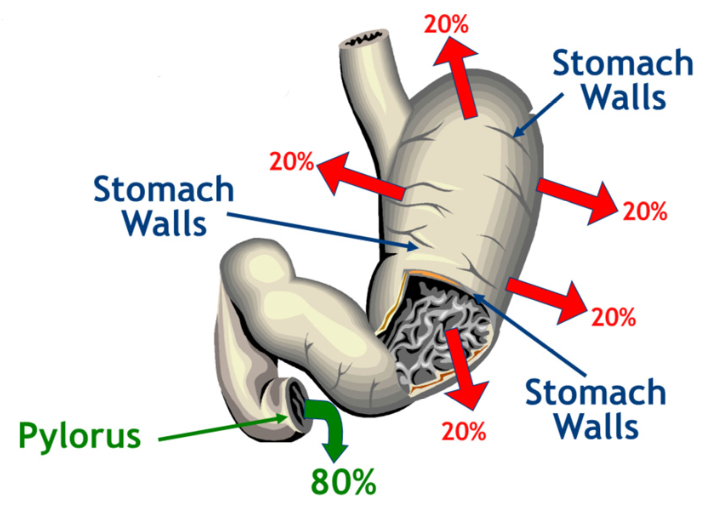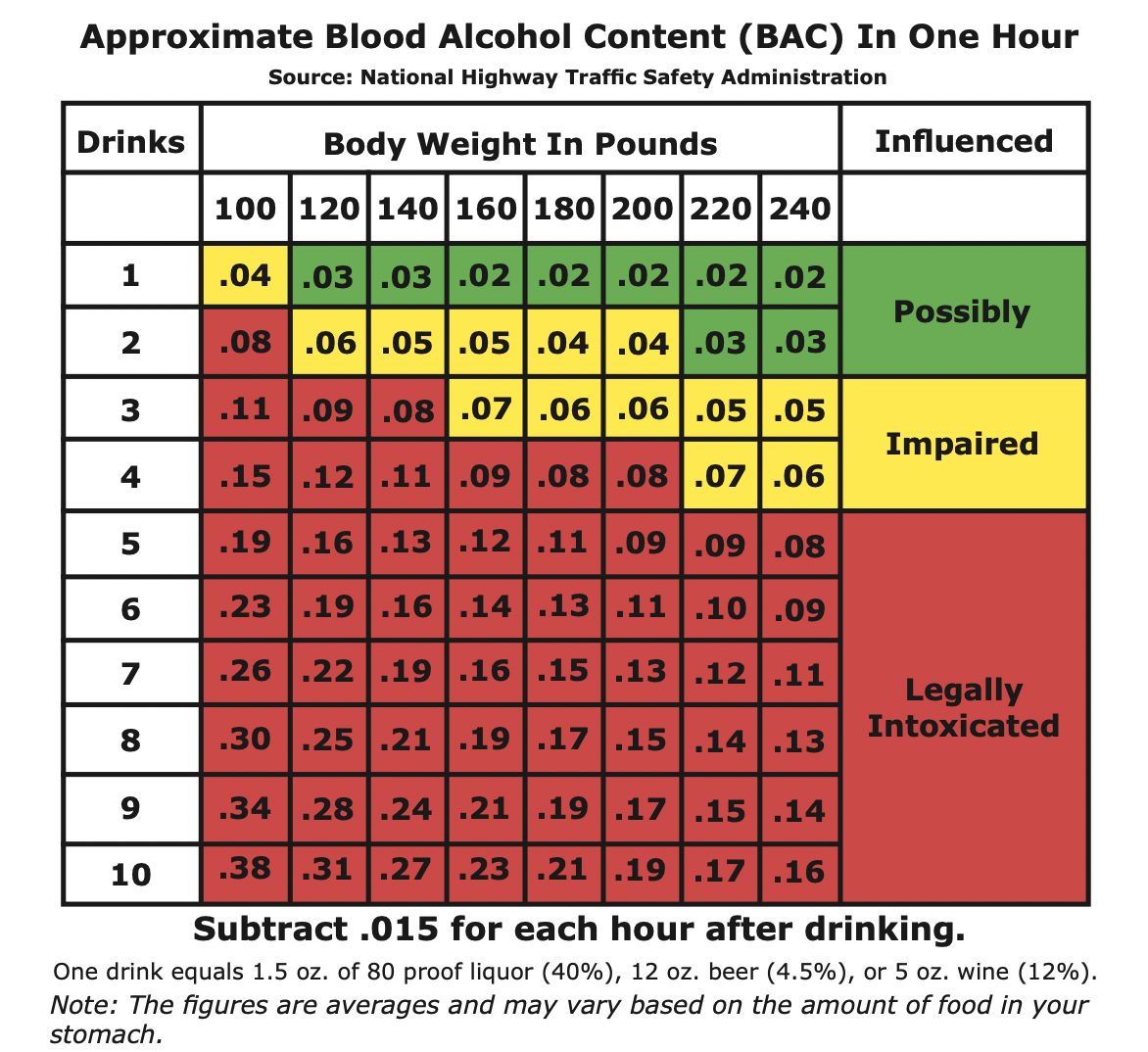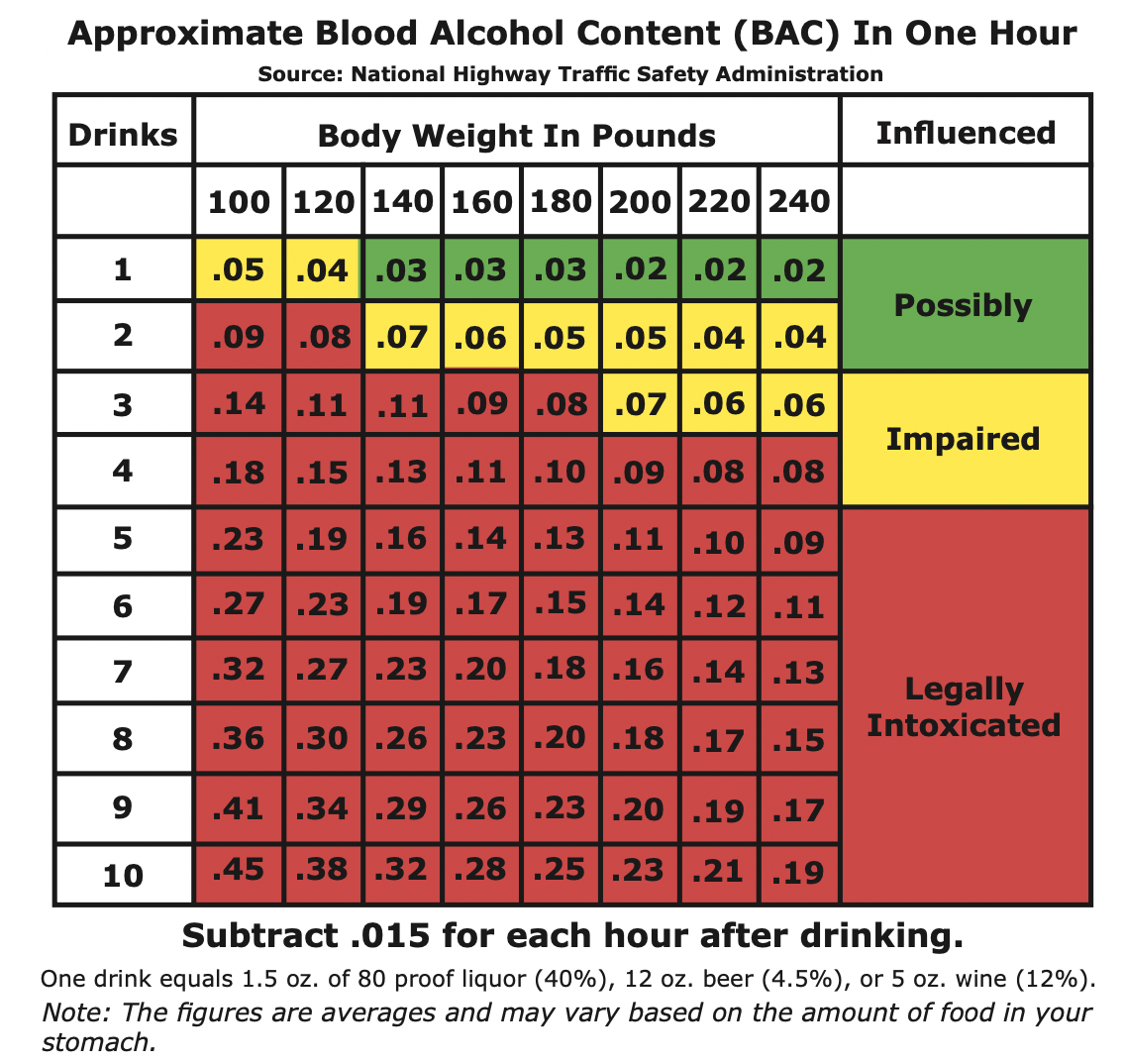
Home > DUII > Facts & Statistics
Contents
DWI Statistics
- General statistics
- 1.02 million drivers were arrested for DWI in 2016
- For every DWI violator arrested, there are between 500 & 2,000 DWI violations committed
- During late night, & weekend hours as many as 10% of drivers may be DWI.
- On certain holiday weekends, & other critical times, the figure may be higher
- Average DWI Driver
- Drives 80 times before arrest
- Once every four or five nights
- Some every day
- Speeding
- In 2016, 10,111 lives were lost in speed‐related crashes
- 40% of drivers with a BAC of .08 or higher involved in fatal crashes were speeding
- On weekdays between 12.00 a.m. & 3:00 a.m., 66% of speeding drivers involved in fatal crashes had a BAC of .08 or higher
- On weekends, 69% of speeding driving involved in fatal crashes had a BAC of .08 or higher
- Alcohol-Related Crash Fatalities
- Impaired drivers kill or injure a person every minute
- 65 deaths per hour
- In 2015, 10,265 alcohol related fatalities represented 29% of all traffic fatalities
- In 2016, 7,052 alcohol‐impaired drivers (67%) involved in fatal crashes had a BAC of .15 or higher
- 26% of all fatal crashes on weekends alcohol‐impaired
- Males account for 80% of all alcohol‐impaired traffic fatalities
- 4x more than for females
- Alcohol‐impaired drivers involved in fatal crashes were 3x higher at night
- Drivers with a BAC of .08 or higher accounted for 62% of the fatalities
- 15% passengers riding with the driver
- 14% occupants of other vehicles
- 9% were persons not in vehicles
- Drivers with a BAC of .15 or higher involved in fatal crashes were 5x more likely to have a prior conviction for DWI compared to drivers involved in fatal crashes with no alcohol involvement
- Alcohol‐related fatalities cost society approximately $44 billion in lost productivity, medical expenses, property damages, and other related expenditures
Alcoholic Drinks
Common Drink Sizes (0.6oz pure ethanol)
- Bottle of beer: 12 fl oz at 5% alcohol
- Glass of wine: 5 fl oz at 12% alcohol
- Shot of whiskey: 1.5 fl oz at 40% alcohol
Blood Alcohol Concentration (BAC)
- BAC = Grams of alcohol found in 1,000 ml of blood.
- E.g. BAC f 0.08% = 8/100 of gram of alcohol in 1,000 ml of blood
- Impairment:
- 0.03 - Slowed reactions
- 0.05 - Impaired judgement
- 0.08 - Impaired vision
- 0.10 - Poor coordination
Absorption of Alcohol
- Alcohol doesn't have to be digested in order to move from the stomach to the blood
- Alcohol can pass directly through the walls of the stomach
- When the alcohol enters the empty stomach,
- 20% of it will make its way directly through the stomach walls.
- remaining 80% will pass through the stomach and enter the small intestine
- The body doesn't need to digest the alcohol before admitting it into the bloodstream, so the small intestine will be open to the alcohol as soon as it hits the stomach.
- If there is food in the stomach:
- affect absorption of alcohol? Yes it will.
- Pylorus, or pyloric valve is closed from stomach to small intestine to allow food to digest
- Traps alcohol along with food in the stomach
- Slowly opens to release food & alcohol into small intestine
- Slows the absorption of alcohol
- Drinker's BAC will not climb as high as it would on an empty stomach.
- Alcohol has an affinity for water.
- Blood will carry alcohol to tissues and organs and deposit it in proportion to their water contents
- Brain tissue has a fairly high water content
- Very little alcohol will be deposited in the drinker's body fat.
- Different from other drugs, e.g. PCP and THC, which are very soluble in fat.
- Gender differences
- The male body is about 68% water,
- The female body is about 55% water.
- Females have less fluid to which to distribute alcohol.

Elimination of Alcohol
- After reaching peak value average person's BAC will drop by about 0.015 per hour
- E.g. a max BAC of 0.15, takes about 10 hours to eliminate all of the alcohol
- Average‐sized male,
- BAC of 0.015 is equivalent to about two thirds of the alcohol content of a standard drink
- about two thirds of a can of beer, or glass of wine, or shot of whiskey).
- typical male will eliminate about two thirds of a drink per hour
- Average‐sized female,
- Same BAC would be reached on just one half of a standard drink.
- typical female will burn up about one half of a drink in that hour.
- Once the alcohol is in blood, nothing affects how quickly it leaves
Males

Females

SFST
SFST Accuracy
- Correct decision results of three studies
- Colorado: 86% arrest/release
- Florida: 95% arrest decisions
- San Diego: 91% arrest decisions
- Colorado Study
- 86% correct arrest/release decisions at 0.05 BAC
- 93% of arrested drivers had a BAC of 0.05 or higher
- Based on HGN, WAT, OLS tests
- Florida Study
- 95% correct arrest decisions
- Based on HGN, WAT, OLS tests
- San Diego Study
- 91% correct arrest decisions were made 91% of the time
- Based on HGN, WAT, OLS tests
- HGN - 88% accurate
- Walk and Turn - 79% accurate
- One Leg Stand - 83% accurate
- Validation only applies if:
- The tests are administered in the prescribed, standardized manner
- The standardized clues are used to assess the suspect’s performance
- The standardized criteria are employed to interpret that performance
Understanding Nystagmus
Vestibular Nystagmus
The vestibular system is a sensory system that provides the leading contribution to the sense of balance and spatial orientation for the purpose of coordinating movement with balance. Together with the cochlea, a part of the auditory system, it constitutes the labyrinth of the inner. Vestibular nystagmus is caused by movement or action to the vestibular system
Rotational Nystagmus
- Occurs when a person is spun around or rotated rapidly
- This causes the fluid in the inner ear to be disturbed.
- If the eyes of a rotating person were observable, they would be seen to jerk noticeably.
Post-rotational Nystagmus
- Occurs the person stops spinning.
- The fluid in the inner ear remains disturbed for a period of time and the eyes continue to jerk.
Caloric Nystagmus
- Occurs when fluid motion in the canals of the vestibular system is stimulated by temperature
- E.g. putting warm water in one ear and cold in the other.
Positional Alcohol Nystagmus
- Occurs when a foreign fluid, such as alcohol, that alters the specific gravity of the blood is in unequal concentrations in the blood and the vestibular system.
- Causes the vestibular system to respond to gravity in certain head positions, resulting in nystagmus.
- In the original HGN study, research was not conducted for performing HGN on subjects lying down. Current research demonstrates HGN can be performed on someone in this position.
Neural Nystagmus
Nystagmus can also result directly from neural activity
Optokinetic Nystagmus
- Nystagmus occurs when the eyes fixate on an object that suddenly moves out of sight, or when the eyes watch sharply contrasting moving images.
- Examples of Optokinetic Nystagmus include watching strobe lights, rotating lights, or rapidly moving traffic in close proximity.
- The HGN test will not be influenced by Optokinetic Nystagmus when administered properly.
- During the HGN test, the suspect is required to fixate the eyes on a penlight, pencil, or similar object that moves in accordance with the HGN testing procedures, thus Optokinetic Nystagmus will not occur.
- The movement of the stimulus and the fixation on the stimulus by the subject precludes this form of nystagmus from being observed by the officer.
Psychological Nystagmus
- Psychological nystagmus is a natural nystagmus that keeps the sensory cells of the eye from tiring.
- It is the most common type of nystagmus and happens to people all the time.
- This type of nystagmus produces extremely minor tremors or jerks of the eyes.
- These tremors are usually too small to be seen with the naked eye.
- Physiological Nystagmus will have no impact on SFSTs because tremors are usually invisible.
Gaze Nystagmus
- Occurs when the eyes attempt to maintain visual fixation on a stimulus
- Horizontal Gaze Nystagmus (HGN)
- An involuntary jerking of the eyes, occurring as the eyes gaze to the side.
- HGN provides the first and most accurate test in the SFST.
- HGN is indicative of alcohol impairment.
- Its presence may also indicate use of certain other drugs
- CNS Depressants, Inhalants, and Dissociative Anaesthetics such as PCP and its analogs.
- Vertical Gaze Nystagmus (VGN)
- An involuntary up and down jerking of the eyes occurring when the eyes gaze upward at maximum elevation.
- VGN is associated with high doses of alcohol for that individual.
- VGN may also be present with the same drugs that cause HGN.
- No known drug causing VGN without causing at least 4 clues of HGN.
- The presence of VGN without HGN could indicate a medical condition.
- For VGN to be recorded, it must be distinct and sustained for a minimum of 4 seconds at maximum elevation
Pathological Disorder Nystagmus
- May also be caused by certain pathological disorders including
- Brain tumours
- Brain damage
- Diseases of the inner ear
- These pathological disorders occur in very few people and in even fewer drivers.
© 2020-2025 Ross Dargahi - Disclaimer - About - Feedback